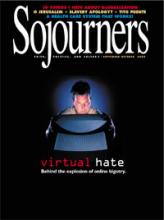Right before Christmas last year, I sat in a Washington, D.C., movie theater watching 100 years of nonviolent change flicker before my eyes through the magic of light and celluloid. The opening scenes of documentary filmmaker Steve York’s A Force More Powerful are from the Old Fort prison in Johannesburg, South Africa, where a young lawyer named Mohandas Gandhi is jailed for organizing the Passive Resistance Association, which encouraged non-whites to burn their identity cards. The camera deftly shifts from the outside perspective of the historian to the inside perspective of the prisoner looking out.
It is 1907. Gandhi has been following the newspaper accounts of the Russian pacifist revolution for the past two years. Knowing that the Russians previously had attempted to end autocracy through assassination, he believes they have found "another remedy which, though very simple, is more powerful than rebellion and murder"—the mass noncooperation strike. While nonviolent resistance had been used in the previous century, the 150,000 Russians who marched on the tsar’s Winter Palace in St. Petersburg formed the first sustained nonviolent political experiment of the 20th century.
A Force More Powerful is a multimedia project. York wrote and directed the feature-length film and the two documentary programs that will air on PBS in September. His incisive interviews of participants in and eyewitnesses to the 20th century’s nonviolent conflicts—covering the American South, India, South Africa, Poland, Denmark, and Chile—are invaluable source material.
Read the Full Article
